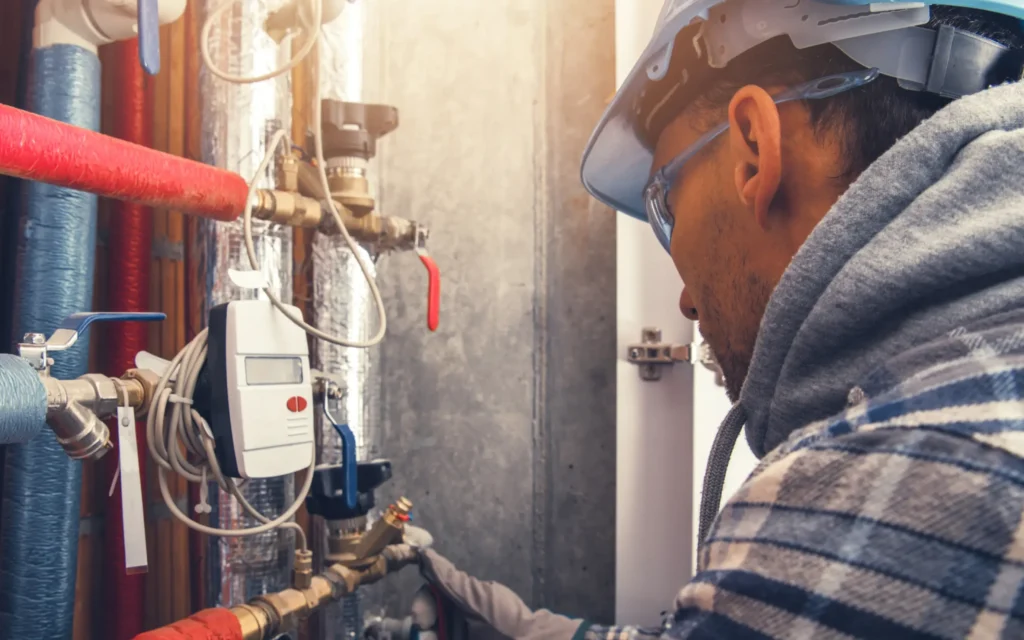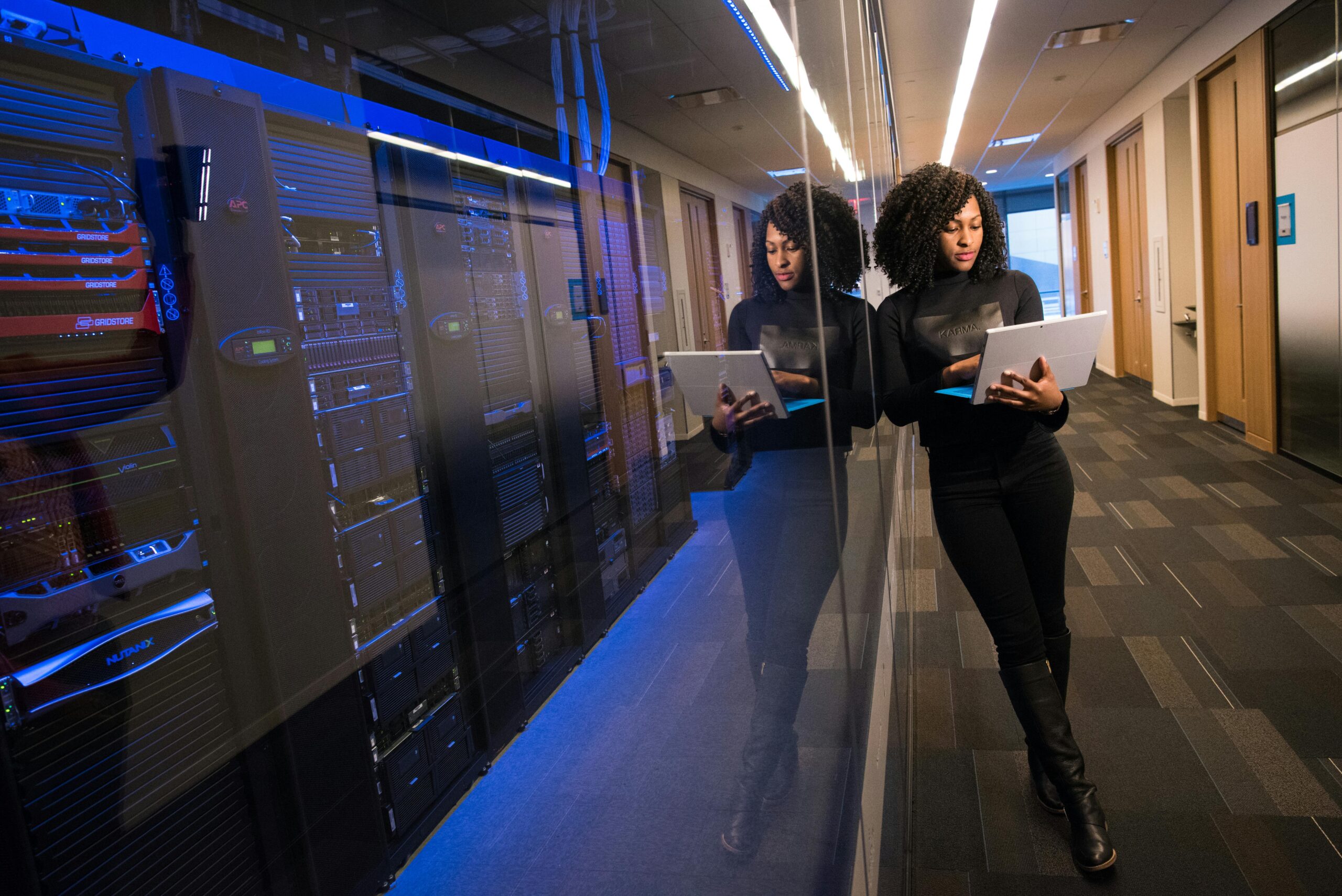
CMMS
AI, Machine Learning, and Algorithms in Facility Management

Artificial Intelligence (AI) continues to reshape industries, and facility management is no exception.
In this episode of the Fexa and Friends Network Show, guest speaker Simone Samms from ENTOUCH shares her insights on the power of AI and how it can enhance our daily lives and work experiences, especially as it pertains to facility management.
Key Points
What is Artificial Intelligence and Machine Learning?
AI, or Artificial Intelligence, is the practice of teaching machines to imitate human intelligence and perform tasks. It involves getting machines to mimic human intelligence, enabling them to learn, reason, and make decisions. AI has become increasingly common in our daily lives, with examples like voice assistants such as Siri and Alexa, as well as customer service chatbots.
Machine Learning (ML) is a specific tool within the AI toolbox. ML algorithms are designed to learn from experience, much like how humans learn. By exposing these algorithms to relevant data, they can improve their ability to recognize patterns and make predictions. For instance, ML algorithms can be trained to recognize images, such as cats, by being exposed to a large number of cat pictures.
In today’s world, the proliferation of IoT sensors and devices has generated massive amounts of data. This data is too vast and complex for humans to manage effectively. This is where machine learning plays a crucial role. ML algorithms can analyze and derive insights from this extensive data, assisting in making sense of it and identifying important patterns that humans might miss.
While machine learning is a key technology in achieving AI, AI also encompasses other techniques such as natural language processing, speech recognition, and robotics. These techniques are all part of the AI toolbox and contribute to creating intelligent systems that can mimic various human capabilities.

What are some key challenges facility managers face in their day-to-day roles, particularly in terms of operations? How can AI potentially address some of these challenges?
Facility managers face a range of challenges in their day-to-day operations. These include managing diverse tasks such as preventative maintenance, repairs, emergency response, space optimization, tenant engagement, and budget constraints.
Additionally, they often deal with data scattered across different systems, making it difficult to gain insights efficiently. AI can address these challenges by streamlining processes, providing real-time visibility into system performance, and analyzing data to identify important trends and issues.
By automating routine tasks and presenting actionable insights, AI frees up facility managers’ time to focus on creative problem-solving and strategic planning. It also enables a shift from reactive responses to proactive maintenance strategies. With the help of AI, facility managers can effectively navigate the complexities of their roles and enhance operational efficiency.
Do the tools used for specific applications continue to learn about the nuances of a facility over time, or can they be configured for additional purposes?
Yes, the tools used for specific applications continue to learn about the nuances of a facility over time. They can also be configured for additional purposes. For example, once a building or assets are equipped with sensors and data is collected into an EMS (Energy Management System) platform, the models can be fine-tuned and adjusted based on the data points received. By adding more data points, such as occupancy sensors or indoor air quality measurements, the models become even smarter and the strategies for managing the buildings improve over time. Similar to how our brains analyze and process more data to improve our strategies, the tools used for facility management can continuously learn and adapt with more data input.

Can AI take over our jobs?
AI can never fully replace humans in their roles.
There are aspects of our work that AI cannot replicate due to the lack of human experiences and intuition. Instead of fearing job loss, we should embrace AI as a tool to enhance our productivity and free up brain space.
By automating repetitive tasks with AI, we can focus on the creative and enjoyable aspects of our jobs. For example, utilizing AI-powered tools like ChatGPT can assist in tasks like building structures or strategies, allowing us to leverage our expertise and experiences to add value.
Moreover, AI can aid in streamlining processes. For example, Simone and her team at ENTOUCH has used AI for generating how-to guides, which significantly improves efficiency and enables them to deliver more content to customers faster.
So, rather than viewing AI as a threat, we should harness its capabilities to augment our work and achieve greater success.
How are smart buildings and AI-powered sensors improving facility management and maintenance processes? What are some examples of their usage and benefits for customers, maintenance teams, and facility managers?
Smart buildings and AI-powered sensors are revolutionizing facility management and maintenance processes in several ways. By leveraging AI and sensor technologies, these systems can detect anomalies, identify potential issues, and facilitate data-driven decision-making.
One key area where significant improvements are observed is in the shift from reactive to proactive maintenance strategies. AI and sensors enable predictive maintenance, which helps improve the reliability and efficiency of critical equipment. By continuously monitoring equipment in real-time and collecting data from various sensors, algorithms can detect anomalies and deviations from normal operating conditions. This early fault detection allows maintenance teams to address issues before they escalate into major breakdowns, reducing downtime and minimizing the impact on tenants and users of the facility.
Moreover, the use of AI and sensors helps optimize maintenance schedules. By considering equipment condition, usage patterns, and other relevant factors, these models can determine precisely when maintenance is needed, avoiding unnecessary or delayed maintenance activities. This optimized approach prolongs the lifespan of equipment, reducing the need for frequent replacements and upgrades, which translates into cost savings for customers and facility managers.
Another significant benefit is improved energy efficiency. Well-maintained equipment operates more efficiently, resulting in energy savings. AI systems can identify opportunities to optimize energy usage, further reducing the environmental impact of the facility.
In summary, AI-powered sensors in smart buildings enhance facility management and maintenance processes by enabling proactive maintenance, reducing downtime, optimizing maintenance schedules, minimizing costs, and increasing energy efficiency. These advancements benefit customers, maintenance teams, and facility managers by ensuring smooth operations, cost savings, and reduced environmental footprint.

So, what role does data analytics and machine learning play in optimizing energy consumption? How can AI be useful in terms of sustainability & compliance within organizations?
Data analytics and machine learning play a crucial role in optimizing energy consumption and promoting sustainability within organizations. By leveraging AI technologies, such as data-driven models and algorithms, organizations can analyze energy consumption patterns, identify inefficiencies, and suggest optimal energy usage strategies. For example, AI can optimize HVAC systems by adjusting temperature and humidity levels, leading to reduced energy consumption and improved indoor air quality.
Furthermore, AI-equipped Energy Management Systems (EMS) can utilize data to understand the performance of building systems. By integrating weather data into the models, organizations can make informed decisions about heating and cooling strategies. For instance, during hot weather conditions, pre-cooling the space when energy is less expensive can help maintain optimal temperatures without human intervention. AI algorithms can take historical behavior and occupancy schedules into account to determine the ideal timing for energy optimization.
In terms of sustainability and compliance, AI models can assist organizations in achieving their energy efficiency goals. By analyzing data on space utilization and occupancy, AI can optimize cooling and energy consumption based on the actual needs of the facility. For example, in a theater, AI can consider ticket sales and occupancy to determine the level of cooling required for each show, thus saving energy and reducing the environmental footprint.
Ultimately, data analytics and AI-driven approaches provide organizations with valuable insights and tools to optimize energy consumption, promote sustainability, and meet compliance requirements.
Do the assets and HVAC systems need special wiring or configuration for this to work? Can older systems also be maintained and run by these artificial systems?
No, the assets and HVAC systems do not require special wiring or configuration to work with artificial systems. According to Simone Samms at ENTOUCH, they have implemented protocols that allow them to seamlessly communicate with both old and new systems. Whether you have existing older systems or are installing new equipment, they can effectively work with them without the need for a complete replacement. Their expertise extends to maintaining and running older systems, ensuring compatibility and efficient operation.

What about things like chatbots, virtual assistants, and similar? Can those improve communications and streamline requests?
Yes, chatbots and virtual assistants have the potential to greatly improve communications and streamline requests.
Chatbots, with the help of natural language processing (NLP), can provide personalized and human-like interactions, making it easier for users to communicate and receive assistance. They can also support multilingual communication, allowing for efficient handling of requests in different languages, even if there is no one on the team who speaks those languages.
Virtual assistants, on the other hand, offer the opportunity to optimize time and increase productivity by assisting with tasks and scheduling. As AI technology continues to advance, the integration of chatbots and virtual assistants into business operations can significantly enhance communication processes and improve overall efficiency.
How is AI being used in the retail industry, particularly with video?
AI in retail video is revolutionizing the industry. By using AI detection to monitor suspicious activity and analyze customer behavior, retailers can enhance security and gain insights into customer engagement. This eliminates the need for constant human surveillance. With AI, retailers can track dwell and graze time, optimize product placement, and understand customer movement and preferences. The use of cameras and AI to analyze customer behavior is poised to transform the retail landscape.
What AI technologies and trends will impact facility management in the future?
AI technologies and trends that will impact facility management in the future include:
1. Energy Management: AI can revolutionize energy management by leveraging data from multiple sensors to optimize energy strategies, reduce expenditures, and achieve sustainability goals. As sensors become more affordable and easier to install, the possibilities for data-driven insights are endless.
2. Natural Language Processing (NLP): NLP holds immense potential in facility management as it can bring automation and robotics closer to human-like interactions. By enhancing AI systems with NLP capabilities, facilities can benefit from improved communication and understanding, bridging the gap between humans and AI.
3. Augmented Reality (AR) and Virtual Reality (VR): While still emerging, AR and VR have promising applications in facility planning, maintenance, and training. By utilizing AR glasses, facility managers can access maintenance instructions and visualize equipment layouts, leading to improved efficiency and effectiveness.
These three areas, energy management, natural language processing, and augmented reality/virtual reality, are poised to make significant advancements in facility management with the help of AI. Additionally, there may be other unforeseen AI technologies that will emerge and contribute to further progress in the industry.
Conclusion
In conclusion, AI and machine learning have become invaluable tools in the realm of facility management. By harnessing the power of AI, facility managers can streamline operations, optimize resource allocation, and enhance overall efficiency. Machine learning algorithms enable the analysis of vast amounts of data, providing valuable insights and identifying important patterns. While AI and machine learning revolutionize the way facility managers work, it is important to note that they can never fully replace human expertise and creativity. Instead, AI serves as a powerful ally, empowering facility managers to make more informed decisions, improve strategies, and focus on higher-level tasks that require human ingenuity. With the continued advancements in AI and machine learning, the future of facility management holds immense potential for further innovation and growth.



